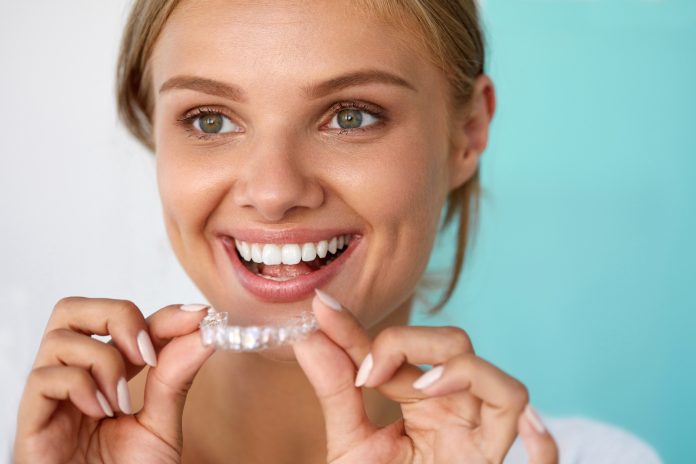
Did you know that your teeth can hinder or help your future career prospects?
Our society places a lot of value on the appearance of our teeth. Hence, as a kid or adolescent, many individuals straighten their permanent teeth using one of many braces options.
Crooked teeth can reappear if, over time, the teeth shift back into their original positions. A retainer, which maintains your teeth in place following treatment, may help reduce this risk, but only if you use it frequently.
Keep on reading to learn all about the different kinds of braces that you can use to fix a variety of misalignment issues.
Understanding Braces as an Orthodontic Treatment
Orthodontic braces conjure up images of clunky metal appliances with flimsy brackets and stinging rubber bands. There has been a tremendous advancement in dental braces technology over the years. Nowadays, they are more effective, aesthetically pleasing, and easier to wear than ever before.
Orthodontists and certain regular dentists use braces to treat a variety of dental abnormalities. These include crowding, misalignment, and bite difficulties.
These braces provide gentle pressure to the teeth and gums to correct misaligned teeth. They will gradually shift them into an ideal position. For the length of orthodontic treatment, the patient just has to wear the braces.
Getting braces doesn’t matter your age, and adult braces are on the rise. Permanent teeth and a healthy jaw bone are the two criteria orthodontists use to determine whether individuals need braces.
Exploring Your Braces Options
Adults with braces have a variety of alternatives to choose from, according to their specific requirements.
For the most part, patients in orthodontics use fixed equipment to realign their teeth. There are a variety of braces for adults to choose from in this category.
Traditional Braces: Metal Braces
When it comes to adult braces, there are few better alternatives than metal ones. Standard metal braces, which are still the most prevalent, are typically composed of high-grade stainless steel.
Each bracket is strung together with wire and attached to your teeth using dental cement to shift your teeth into alignment.
Ceramic Braces
Braces made of transparent porcelain are a modern twist on old-fashioned metal.
Ceramic braces are the same size and form as metal braces. Yet, their tooth-colored or transparent brackets allow them to fit in seamlessly with your smile. Adults are becoming increasingly attracted to this system because of its visual appeal.
Lingual Braces
Lingual braces are unnoticeable from the outside since they are put on the interior of teeth.
Even though lingual braces might be uncomfortable, they are the least noticeable form of fixed orthodontic device available. The use of lingual braces may be a viable alternative for individuals worried about how they look.
Self-Ligating Braces
Traditional metal braces employ the same technology as self-ligating braces to strengthen teeth. Yet, the latter is more pleasant to wear. Elastic bands or metal ties aren’t necessary, and the braces are less noticeable.
Spring-loaded doors maintain archwire pressure in self-ligating braces. They gently move your teeth into their proper positions. In-office orthodontist appointments are shorter and more often scheduled than conventional braces. Also, there are no bands to adjust or tighten.
Self-ligating braces make brushing and flossing teeth simpler. Traditional braces’ elastic ties may generate friction. It makes cleaning below the braces difficult and traps food. Orthodontic braces are made more comfortable and less likely to trap food particles.
Clear Aligners
Invisalign and other clear aligners are typically worn for 22 hours a day but may be removed at any time. Every two weeks, you’ll switch out your clear aligner trays for a new set of transparent plastic aligners that are custom-made for your mouth.
Most adult patients choose clear aligners. Obviously, it’s because the treatment is more pleasant than conventional braces. Since the trays are practically undetectable and there are no wires or brackets involved.
For the most part, Invisalign treatment lasts between 12 and 18 months. However, you may begin seeing benefits within a few weeks after starting treatment.
Metal Braces vs. Clear Aligners
A dentist or orthodontist doing the clear aligner therapy will visit the patient regularly to check tooth mobility.
Orthodontists that use Invisalign must see their patients once every six weeks (every three aligners). Regular appointments with an orthodontist are necessary for those who wear braces.
Unlike braces, Aligners are nearly undetectable, detachable, and more hygienic. It’s harder to clean, eat with, and more uncomfortable to wear traditional, lingual, and ceramic braces (for some people).
Finally, since metal braces are neither removable nor “invisible,” they are less cosmetically pleasant than aligners. Clear aligner therapy is the norm between the ages of 12 and 18 months.
Depending on the severity of the case, braces might last anywhere from 18 months to two years.
Maintenance of Your Alignment: Retainers
Your teeth are held in place by retainers after braces have moved them into the proper position. Of course, your dentist will be responsible for removing your braces, but you can find out how here.
Next, there are two types of retainers: those that are permanent and those that are detachable or removable.
A small metal strip is attached to the back of your teeth using a fixed retainer. Like a clear aligner, a detachable retainer is worn just at night.
To keep their teeth from moving, most individuals wear a retainer every night (for the rest of their lives).
Alignment and Braces: Caring for Your Teeth
Nowadays, there are numerous ways and braces options for people of all ages to treat any misalignment or bite issues. And, considering that it affects your social standing and your overall health, it’s critical to take care of your oral health.
We hope that our guide has shed some light on all of the different kinds of braces available to you. And, if you liked reading our article, then you’ll love checking out our health and lifestyle sections for more tips and tricks to take care of yourself and your health better.








